This is one of my favorite dishes to eat in the summer when it’s hot out – Bibim Guksu (비빔국수), or Cold Spicy Korean Mixed Noodles. It’s light, refreshing, and packed with bold, spicy flavors that wake up your taste buds.
Made with thin wheat noodles (typically somyeon or somen), this dish is tossed in a vibrant sauce made from gochujang (Korean chili paste), vinegar, soy sauce, sugar, sesame oil, and garlic. The result is a sweet-spicy-tangy flavor that’s both satisfying and cooling.
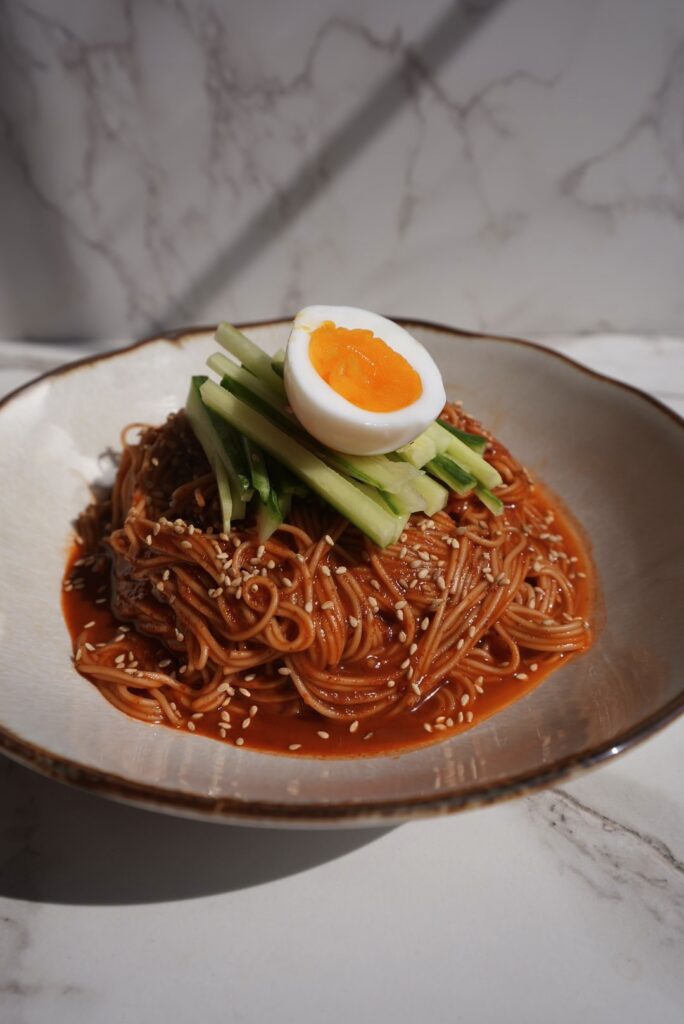
Bibim Guksu is usually topped with crisp, fresh vegetables like cucumber, carrots, or cabbage, and sometimes served with hard-boiled eggs or slices of pear for extra texture and contrast. Depending on your preference for toppings, you can add really whatever fresh vegetables you like.
The cold noodles and spicy-sweet dressing make it the perfect no-fuss meal for hot days when you don’t want to cook over a hot stove for long. It comes together quickly, is incredibly customizable, and hits all the right notes!
Another thing I love about Bibim Guksu is how adaptable it is. You can make it vegetarian or vegan by skipping the egg, or even bulk it up with some cold tofu or protein of your choice.
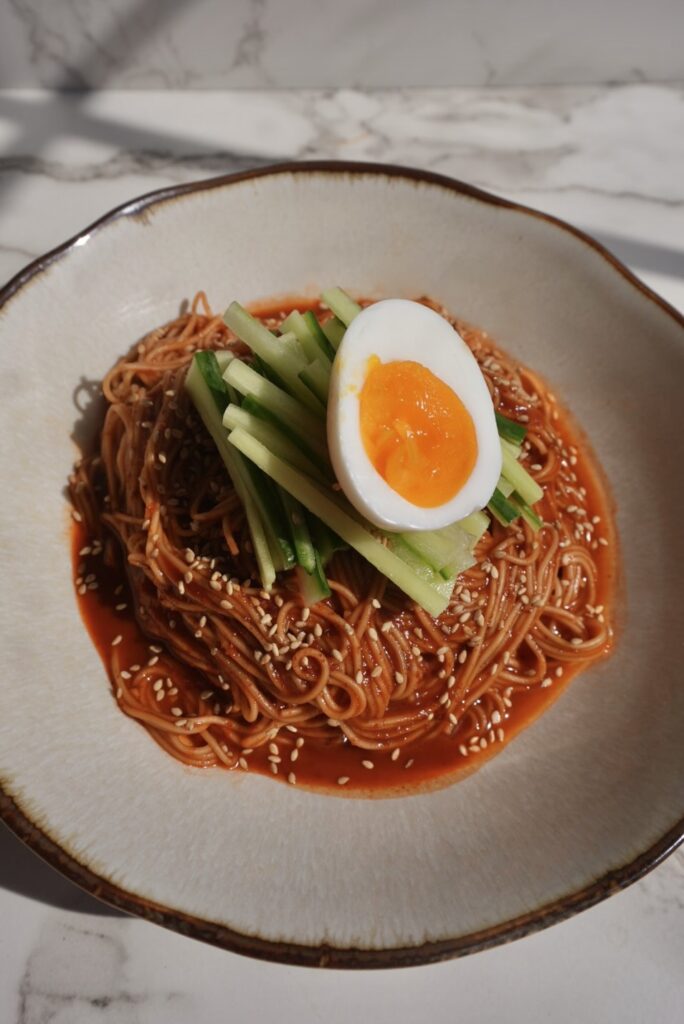
It’s also a great clean-out-the-fridge meal – toss in any crunchy veggies you have on hand. Plus, since everything is served cold, it’s perfect for meal prep or making ahead for a picnic or lunch on the go. If you’re new to Korean food, this dish is a great gateway. Simple to make, but full of flavor and texture.
Alright, let’s get into it!
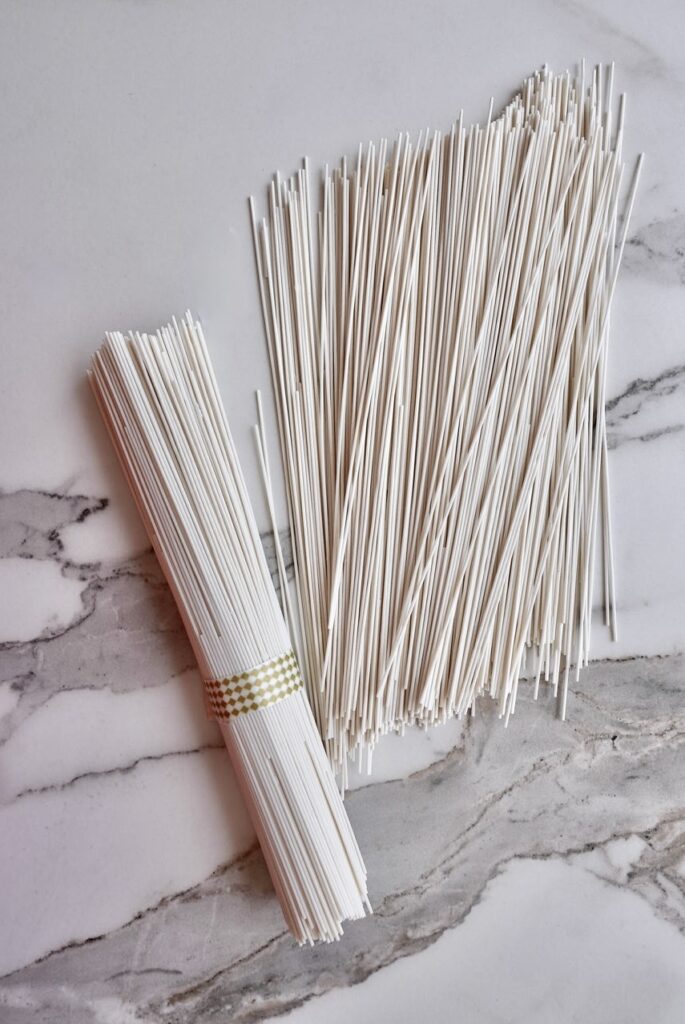
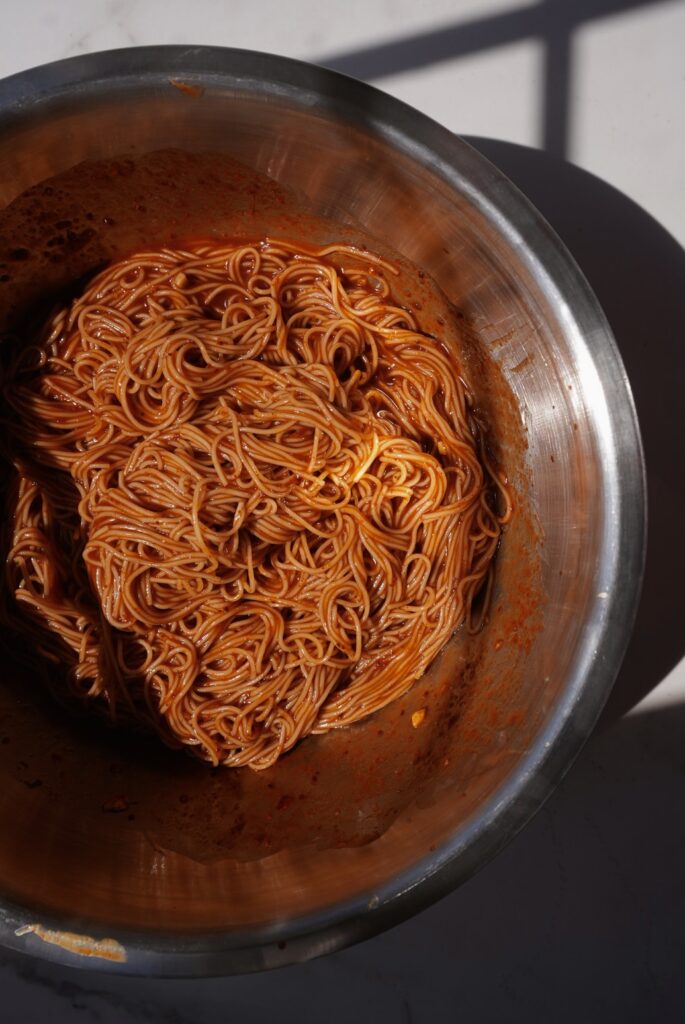
What Noodles Should I Use?
Somyeon (also spelled somen) are thin, white wheat noodles commonly used in Korean and Japanese cuisine. They’re made from wheat flour, water, and salt, and are known for their quick cooking time and smooth, slightly chewy texture.
In dishes like Bibim Guksu, somyeon noodles are ideal because they’re delicate enough to mix easily with the flavorful sauce while still holding their shape. After boiling, they’re typically rinsed in cold water to stop the cooking and give them that refreshing bite that makes cold noodle dishes so satisfying in the summer.
If you can’t find somyeon, try Japanese somen (nearly identical), or switch it up with rice vermicelli or buckwheat soba for a different flavor – just be sure to rinse the noodles in cold water.
What is Gochujang?
Gochujang adds an incredible depth of flavor with its signature blend of heat, sweetness, and umami. Made from red chili peppers, fermented soybeans, glutinous rice, and salt, gochujang brings a spicy kick. This thick, vibrant red paste has a unique fermentation process that gives it a slight tang and an earthy quality, similar to that of miso or soy sauce but with a touch of sweetness from the glutinous rice.
In Korean cooking, gochujang is a beloved staple, used in everything from stews and marinades to dipping sauces. Its versatility has made it popular in fusion dishes, adding a unique Korean twist and depth to many cuisines.

Sauce Ingredients:
- Gochujang (Korean Chili Paste): Adds rich, fermented heat and depth with a touch of sweetness; the main source of the dish’s signature spicy flavor.
- Gochugaru (Korean Chili Flakes): Boosts the heat level and adds a smoky, slightly fruity chili kick.
- Water: Helps loosen the sauce to coat the noodles evenly without being too thick or sticky. Alternatively, you can substitute for kimchi brine if you want to add more tanginess.
- Sugar: Balances the spiciness and tang with a hint of sweetness, rounding out the flavors.
- Rice Vinegar: Adds a refreshing tang that cuts through the richness.
- Sesame Oil: Brings a nutty aroma and smooth finish that ties all the flavors together.
- Soy Sauce: Adds umami and saltiness.
- Garlic: Gives the sauce a pungent, savory edge.
- Crushed Sesame Seeds: Enhance the nutty flavor and add a bit of texture to the sauce.
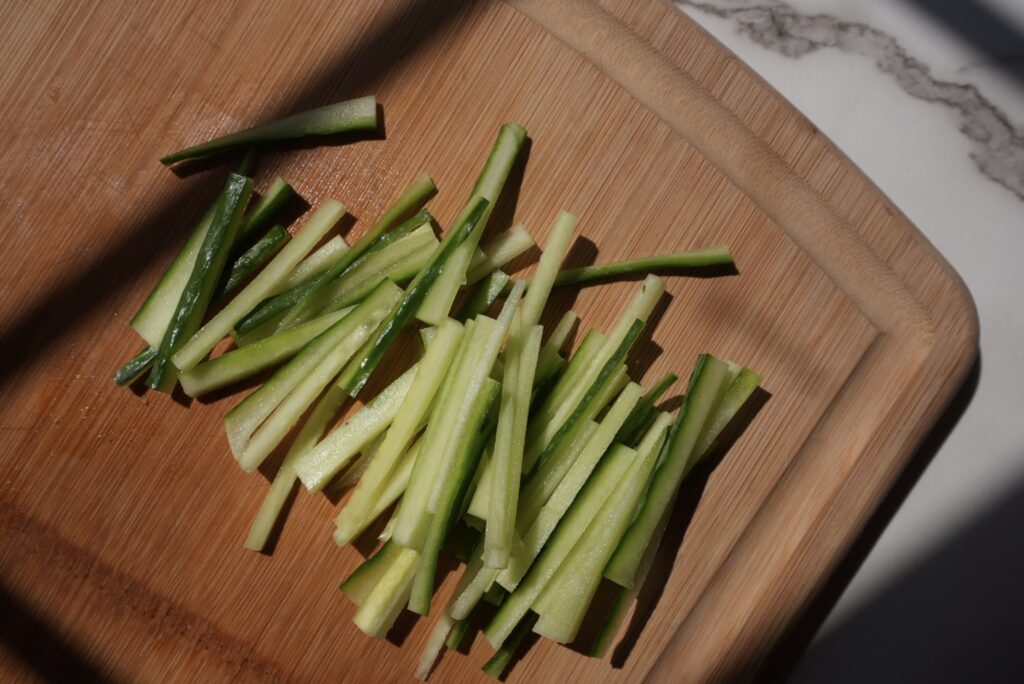
What Toppings to Add to Bibim Guksu:
- Julienned Cucumbers: My personal favorite, especially when you’re eating this dish in the summertime. Adds a cool, crisp contrast to the spicy noodles.
- Boiled Egg (Halved): Brings creaminess and protein to make it more filling.
- Asian Pear Slices: Adds juicy sweetness and a refreshing crunch.
- Shredded Cabbage: Offers crunch and a mild bitterness to balance the bold sauce.
- Crushed Seaweed (Gim): Adds umami and a light crispiness.
- Kimchi: Gives a tangy, fermented kick that pairs well with the sauce.
- Julienned Carrots: Adds color, crunch, and a hint of sweetness.
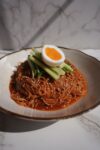
Bibim Guksu (Cold Spicy Korean Mixed Noodles)
- Total Time: 8 minutes
Description
Bibim Guksu is a refreshing Korean noodle dish made with thin wheat noodles tossed in a sweet, spicy, and tangy gochujang-based sauce, perfect for hot summer days.
Ingredients
- 8 oz somyeon (thin wheat noodles)
- 3 tbsp gochujang
- 1 tbsp gochugaru
- 3 tbsp water
- 3 tbsp sugar
- 3 tbsp rice vinegar
- 1 tbsp sesame oil
- 3 tbsp soy sauce
- 2 garlic cloves
- 2 tbsp crushed sesame seeds
- Optional garnishes: roasted sesame seeds, julienned cucumbers, Asian pears, boiled egg, cabbage
Instructions
- Bring a large pot of water to a boil. Add the somyeon noodles and cook according to package instructions (usually 3 minutes – take them out immediately; it’s easy to overcook!).
- Drain and rinse the noodles under cold water until completely cooled. Set aside.
- In a large bowl, make the sauce by mixing together the gochujang, gochugaru, water, sugar, rice vinegar, sesame oil, soy sauce, garlic, and crushed sesame seeds until well combined.
- Into the same bowl, add the cold noodles with the sauce until evenly coated.
- Transfer to serving bowls and top with your choice of garnishes like cucumbers, Asian pears, boiled egg, cabbage, and a sprinkle of roasted sesame seeds.
- Prep Time: 5 minutes
- Cook Time: 3 minutes

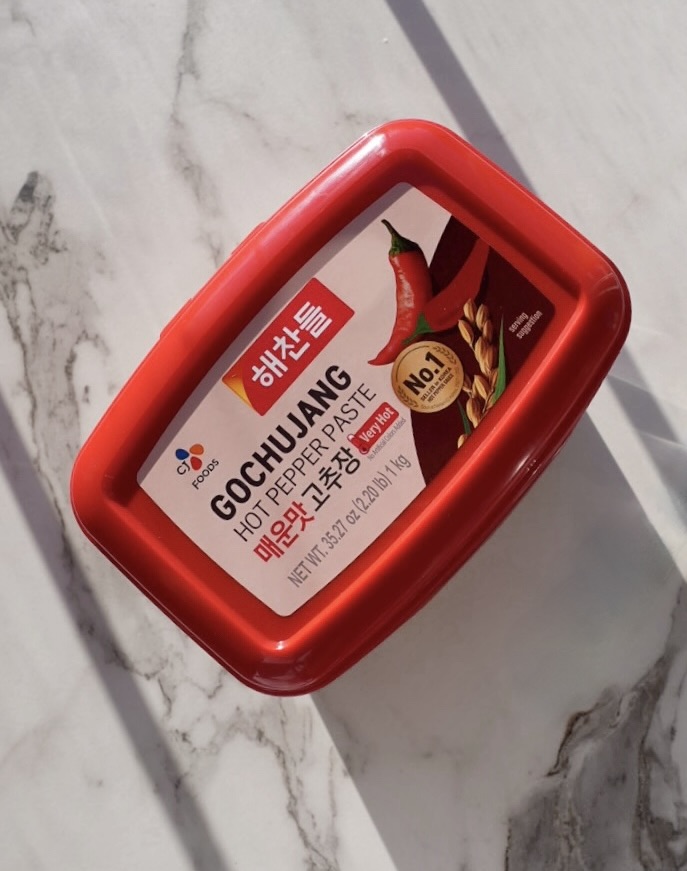
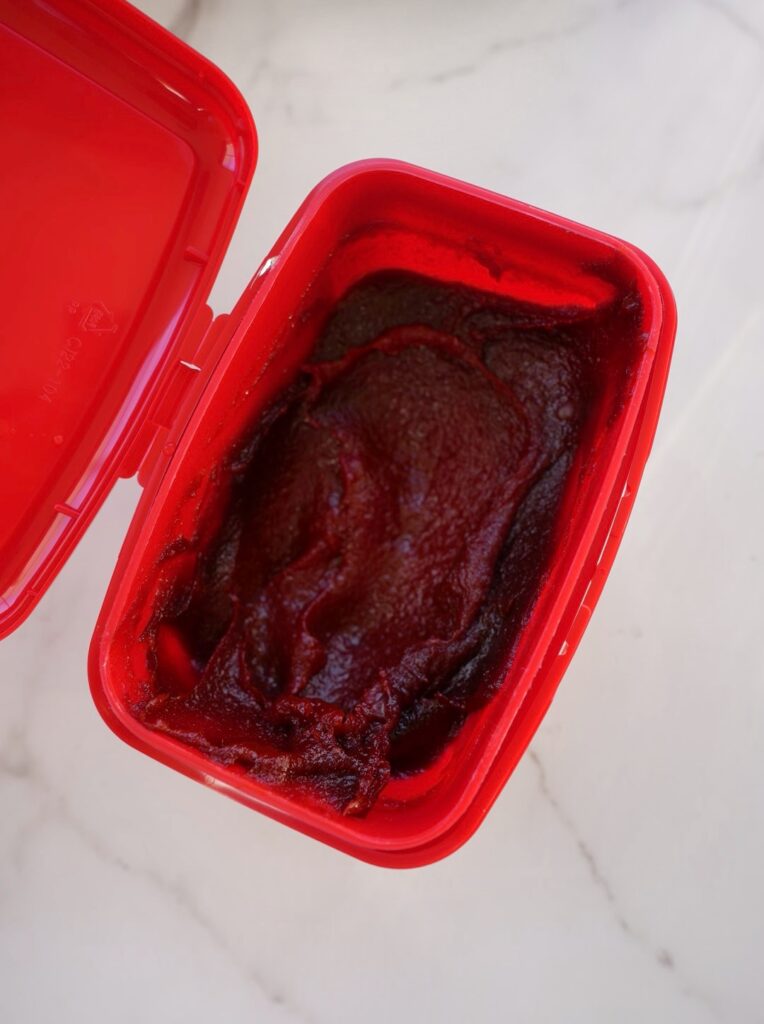
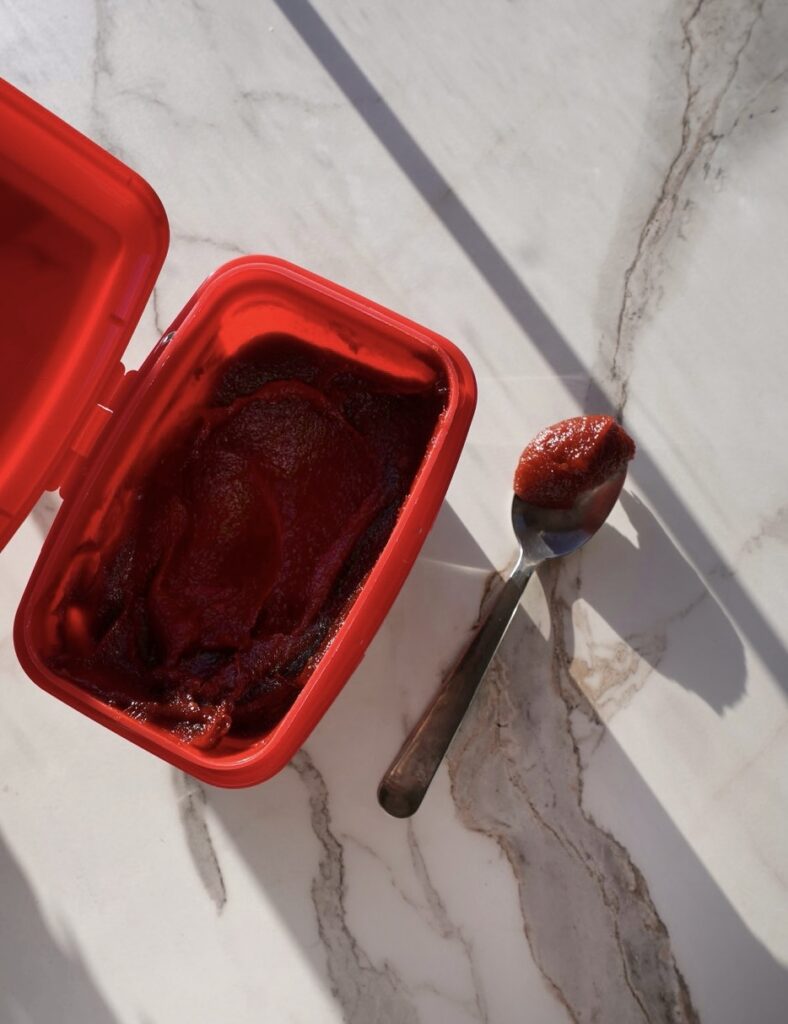



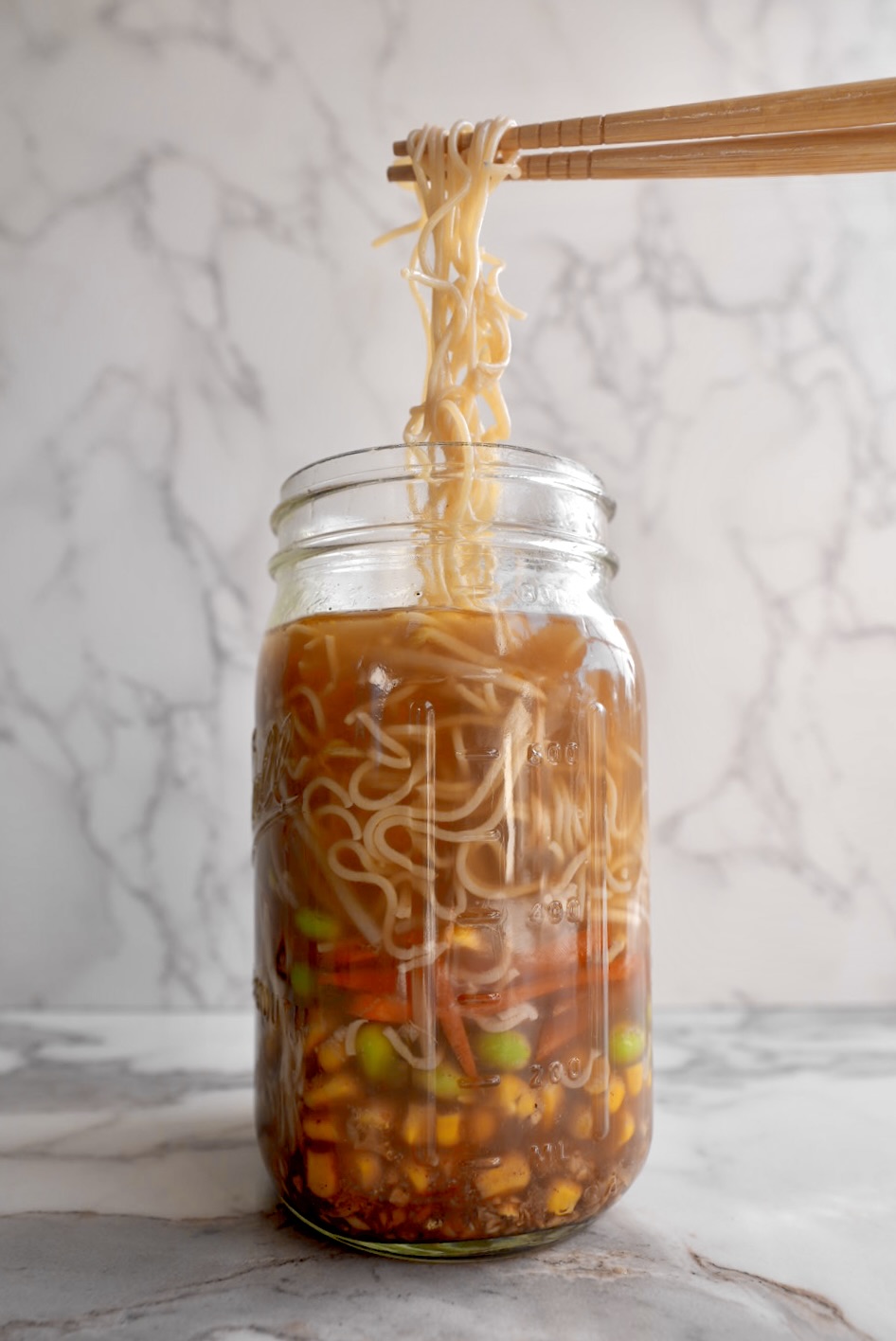
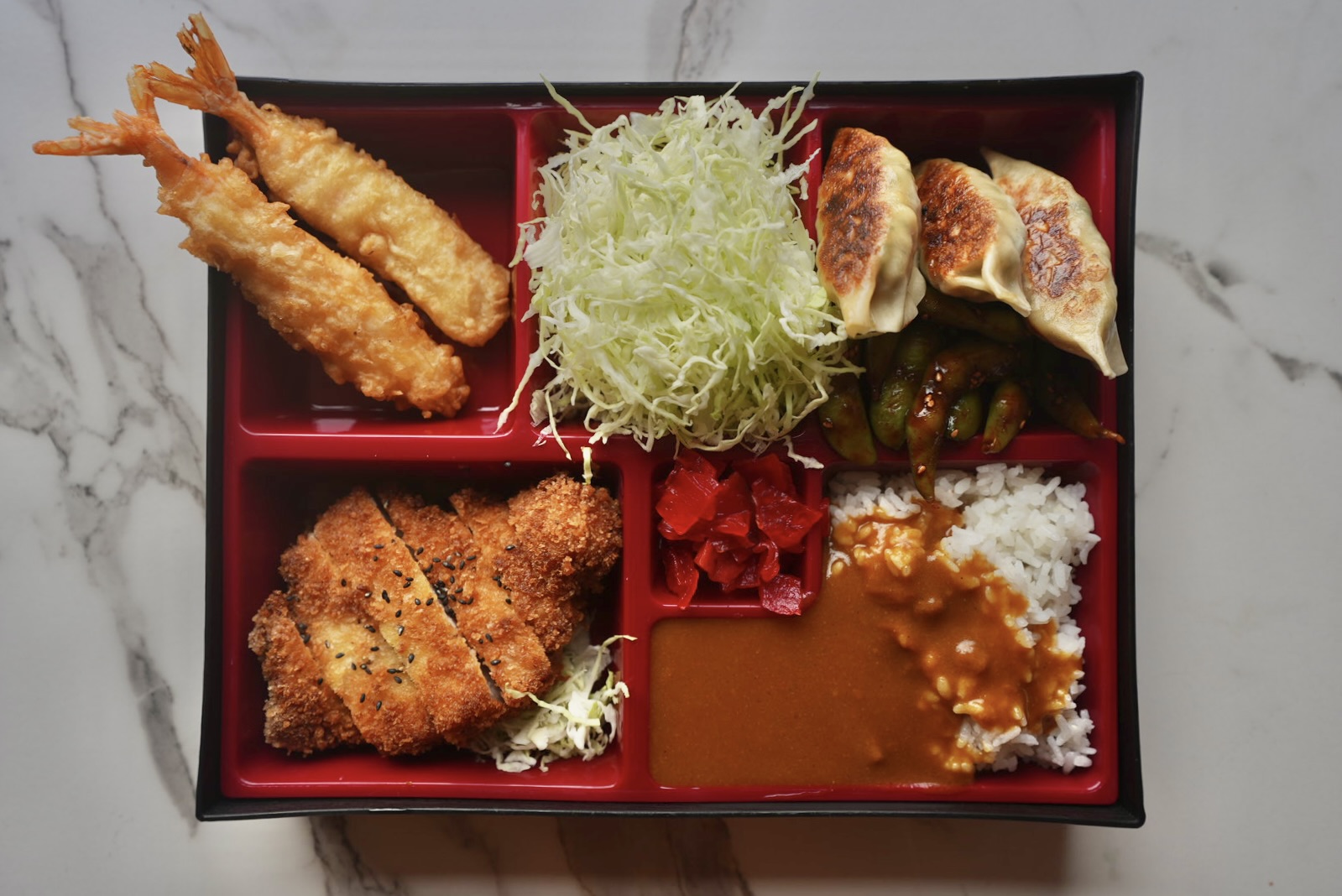
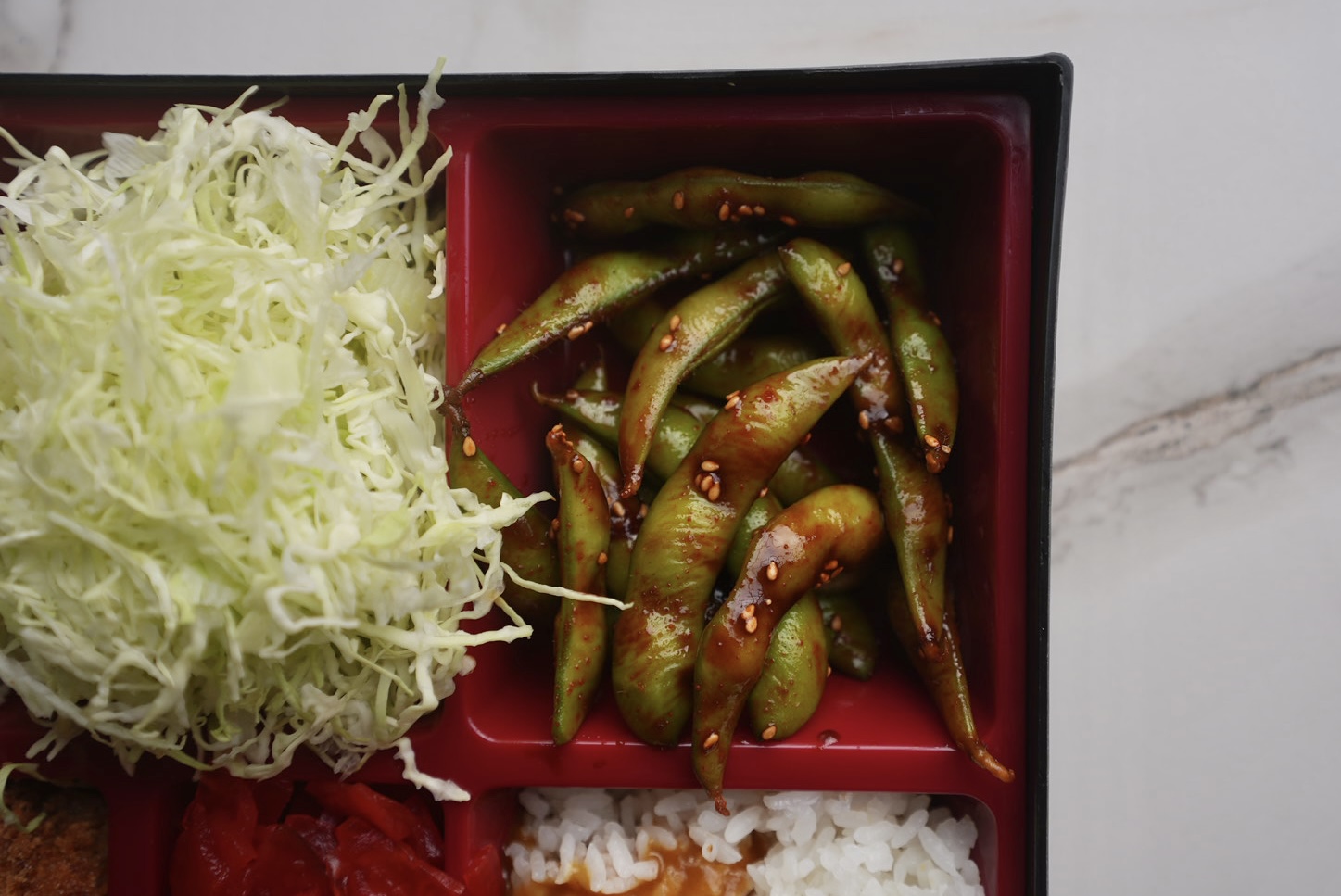
Normally a skeptic when it comes to cold noodles. But these hit all the right notes. Love the spiciness, as did my husband. We ate with some kimchi on the side.
Hi Brenda – I’m also a skeptic! So glad you enjoyed this one too, though! 🙂
Big fan of cold noodles! Loved this one!
Yay! Thanks Cindy!
Chilled and spicy noodles are a good combo! I love summer pasta salad season so why not add an asian one into the mix
Totally agree! Thanks Julia! 🙂